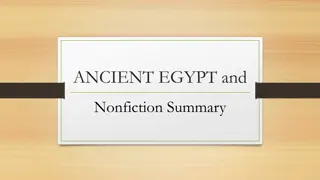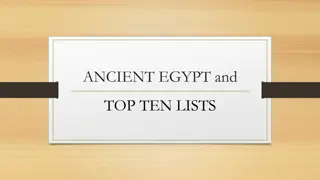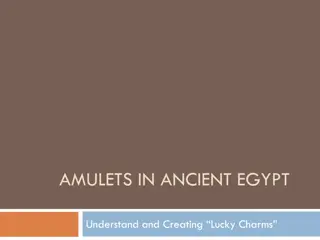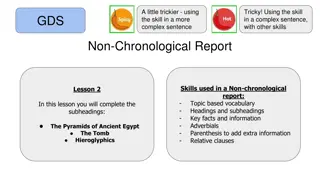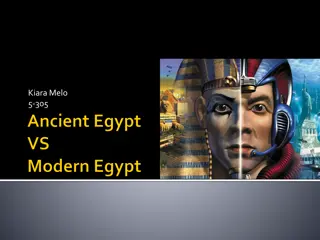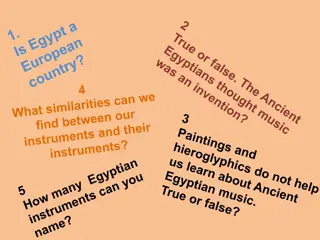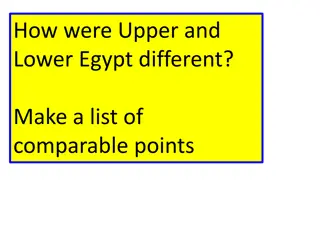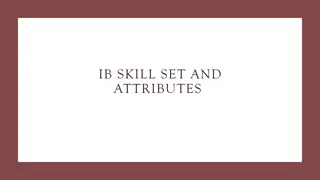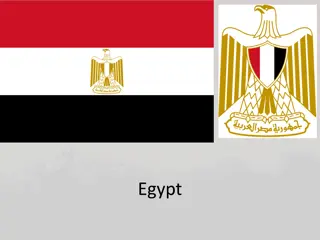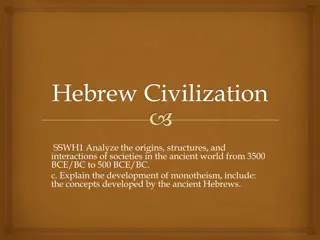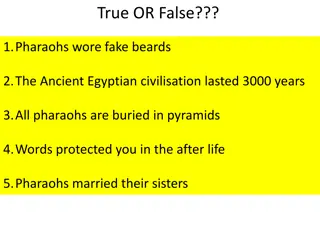Ancient Egypt's Government and Social Structures
Explore the intricate government and social hierarchy of ancient Egypt, featuring the roles of the Pharaoh, Vizier, Overseer of the Treasury, Army Commanders, Governors, and Nomarchs. Learn about the divisions of power, responsibilities, and titles that governed this fascinating civilization.
Download Presentation

Please find below an Image/Link to download the presentation.
The content on the website is provided AS IS for your information and personal use only. It may not be sold, licensed, or shared on other websites without obtaining consent from the author.If you encounter any issues during the download, it is possible that the publisher has removed the file from their server.
You are allowed to download the files provided on this website for personal or commercial use, subject to the condition that they are used lawfully. All files are the property of their respective owners.
The content on the website is provided AS IS for your information and personal use only. It may not be sold, licensed, or shared on other websites without obtaining consent from the author.
E N D
Presentation Transcript
GOVERNMENT AND SOCIAL STRUCTURES IN ANCIENT EGYPT
TERMS Pharaoh the title given to the rulers in ancient Egypt. Nomes the provinces into which ancient Egypt was divided. Nomarch the official who governed a nome (province) in ancient Egypt.
GOVERNMENT AND SOCIAL HIERARCHY
PHARAOH Pharaoh comes from the Egyptian word meaning Great House . They were thought of as a descendant of the sun god.
THE PHARAOH The position of pharaoh was passed to the eldest son of the king s chief wife. Some chief wives gave birth to only daughters, and several of them claimed the throne. Some pharaoh s had several wives who were called lesser wives.
THE VIZIER The highest ranking official, the vizier, served as the pharaoh s deputy in all affairs of the state. They were in charge of collecting taxes, overseeing judges, scribes, and government officials, a job that became very difficult so a second Vizier was needed, one from upper and one from lower Egypt. Viziers were often a prince of royal blood.
OVERSEER OF THE TREASURY Worked directly under the vizier. Overseers kept track of taxes and tributes. Taxes were often collected in the form of crops (from farmers) and goods (from skilled workers). So the treasuries were often warehouses.
ARMY COMMANDERS AND GOVERNORS The Commanders controlled the army and conquered territories. The Governors would then rule the newly acquired territories and regulated soldiers who kept the conquered people in check.
NOMARCHS Ancient Egypt was divided into 42 provinces called nomes. Each of these territories were governed by an official called a nomarch, appointed by the pharaoh.
The nomarch was responsible for: collecting taxes, keeping law and order, raising troops in time of war, and organizing workers.
EGYPTIAN LAW They did not have an extensive codes of law. Priests, soldiers or government officials presided over local courts. Penalties for crimes included physical punishment, from community service to beatings, to death. **If the guilty person ran away, their family would be taken instead.
QUESTIONS TO CONSIDER 1. What could be seen as the advantages and disadvantages of this system of government? 2. Why do you think bureaucracy became more complicated in the Middle and New Kingdoms?
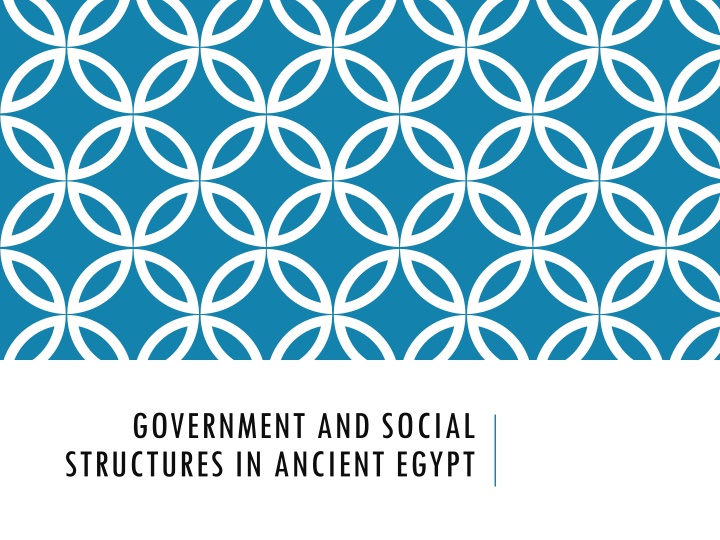

![[PDF⚡READ❤ONLINE] Tutankhamun's Trumpet: Ancient Egypt in 100 Objects from the](/thumb/20549/pdf-read-online-tutankhamun-s-trumpet-ancient-egypt-in-100-objects-from-the.jpg)
